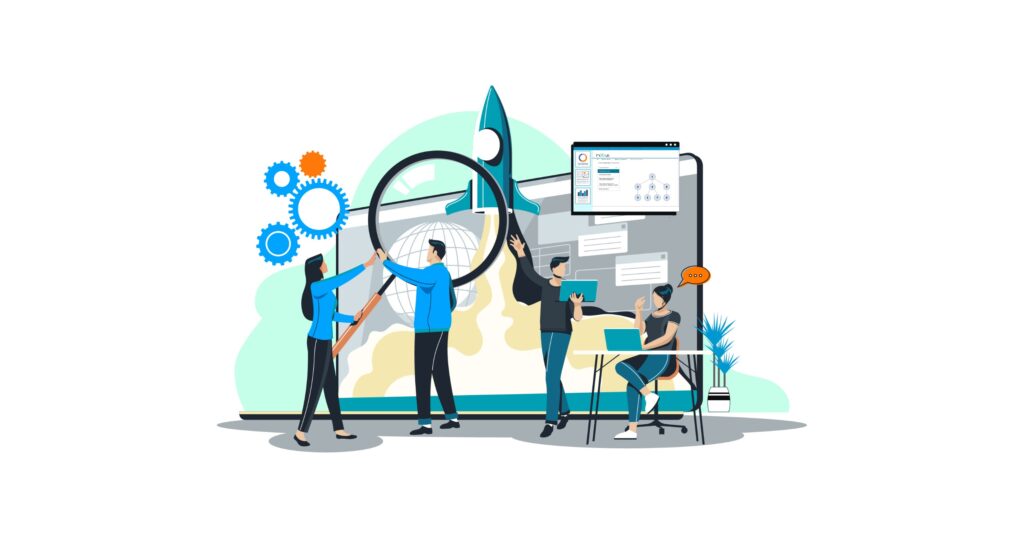STEM Education for Industry 5.0: How to Prepare Students for the Future of Work

The landscape of work is undergoing a profound transformation as we enter the era of Industry 5.0. This new phase in industrial evolution is not just a continuation of the previous digital revolutions but represents a fundamental shift in how humans and machines interact. For educators, this transition brings both opportunities and challenges, demanding a comprehensive overhaul of STEM education.
This blog will explore how Industry 5.0 impacts education, identify current problems with STEM education, and propose strategies to adapt curricula to meet future needs. We will also examine how the Möbius platform can facilitate this evolution.
Take a deep dive – Möbius STEM Learning: Unlocking the Potential of India’s Future
The Advent of Industry 5.0
Industry 5.0 marks a significant departure from the automation-centric focus of Industry 4.0. While Industry 4.0 integrated advanced technologies like the Internet of Things (IoT) and big data into manufacturing, Industry 5.0 emphasizes a collaborative approach between humans and machines.
This era seeks to augment human capabilities rather than replace them, placing a premium on human creativity, critical thinking, and emotional intelligence.
Key Characteristics of Industry 5.0:
- Human-Machine Collaboration: Industry 5.0 envisions a future where machines and humans work together in harmony. Machines will handle repetitive and routine tasks, while humans will contribute creativity, problem-solving skills, and emotional intelligence. This collaboration aims to enhance productivity and innovation.
- Customization and Personalization: Unlike the mass production models of the past, Industry 5.0 focuses on customization. Production processes are designed to meet individual needs, resulting in highly personalized products and services. This shift demands a workforce adept at managing and implementing personalized solutions.
- Sustainability and Social Responsibility: Industry 5.0 integrates ethical considerations into technological advancements. Emphasis is placed on sustainability and social responsibility, ensuring that industrial growth aligns with environmental protection and equitable social practices.
The Problems of STEM Education for Industry 5.0
As we transition into Industry 5.0, the existing STEM education system faces several critical challenges that need addressing:
- Inadequate Focus on Soft Skills: Traditional STEM education often emphasizes technical knowledge at the expense of soft skills like emotional intelligence, creativity, and teamwork. These skills are essential for thriving in an environment where human-machine collaboration is key.
- Outdated Curriculum: Many current STEM curricula are not aligned with the latest technological advancements and industry needs. This misalignment means that students may not be equipped with the skills required for the modern workforce.
- Limited Technological Integration: Despite the central role of technology in Industry 5.0, many educational institutions struggle to integrate advanced tools and platforms into their teaching methods. This gap limits students’ exposure to the technologies they will encounter in the workforce.
- Insufficient Emphasis on Real-World Applications: STEM education often lacks a focus on real-world problem-solving. Students may learn theoretical concepts without understanding how to apply them in practical scenarios.
How to Adapt STEM Education for Industry 5.0
As we transition into a new era, the existing STEM education system faces several critical challenges that need addressing:
- Emphasize Interdisciplinary Learning: Integrating STEM with arts and humanities—commonly referred to as STEAM education—can foster a more holistic approach. This interdisciplinary model encourages students to approach problems creatively and develop well-rounded skills.
- Incorporate Real-World Applications: Implementing project-based learning and experiential education allows students to apply theoretical knowledge to practical challenges. This hands-on approach enhances problem-solving abilities and prepares students for real-world scenarios.
- Focus on Soft Skills Development: Incorporate training that enhances emotional intelligence, adaptability, and communication skills. These skills are crucial for effective collaboration and leadership in a human-machine integrated work environment.
- Adopt Technology-Driven Learning Tools: Utilizing advanced educational platforms like Möbius can bridge the gap between current STEM education practices and the needs of Industry 5.0. Möbius provides adaptive learning tools, personalized assessments, and detailed analytics, aligning educational practices with modern industry requirements.
Now that we understand how to adapt STEM education for Industry 5.0, let’s explore how Möbius facilitates this transition.
How Möbius Can Support the Modern Workforce
Möbius stands out as a powerful tool in transforming STEM education to meet the needs of Industry 5.0. Here’s how:
- Adaptive Learning: Möbius offers adaptive learning tools that tailor educational experiences to each student’s unique needs. This personalized approach ensures that students grasp concepts thoroughly before moving forward, reflecting the customization seen in Industry 5.0.
- Comprehensive Assessments: The platform’s use of algorithmic and in-line questions allows for a deep assessment of student understanding. These features provide continuous feedback, essential for developing critical thinking and problem-solving skills.
- Data-Driven Insights: Möbius’s robust analytics provide educators with valuable student insights into their engagement and performance. This data-driven approach enables targeted interventions, supporting students in their learning journey and preparing them for the complexities of Industry 5.0.
- Real-World Relevance: By incorporating multimedia visualizations and interactive digital content, Möbius makes complex STEM concepts accessible and engaging. This approach helps students understand and apply their knowledge in practical contexts.
Conclusion
Industry 5.0 heralds a future where the synergy between humans and machines will define productivity and innovation. Preparing students for this future requires a fundamental shift in STEM education. By addressing the current shortcomings in curricula and leveraging advanced tools like Möbius, educational institutions can better equip students for the evolving demands of the workforce.
In the upcoming parts of this series, we will explore specific strategies for integrating these changes into STEM education and delve deeper into additional tools and methodologies that can facilitate this transition.
Stay tuned to discover more about how we can advance STEM education to align with the needs of Industry 5.0.
Want to explore the Möbius experience? Book a personalized demo today!